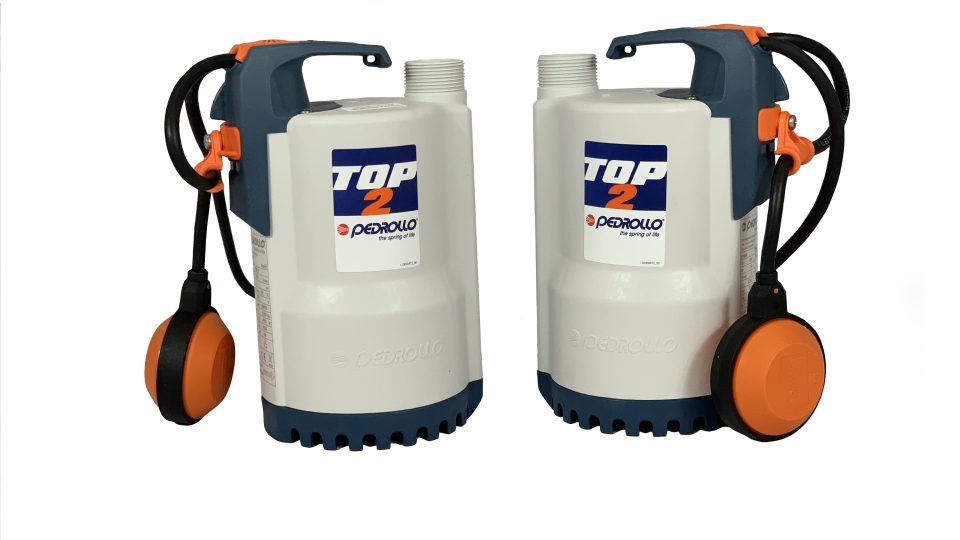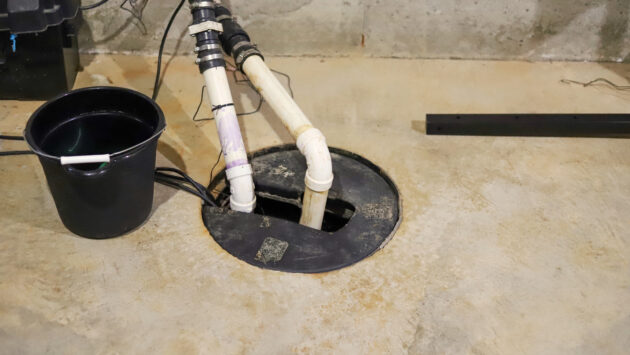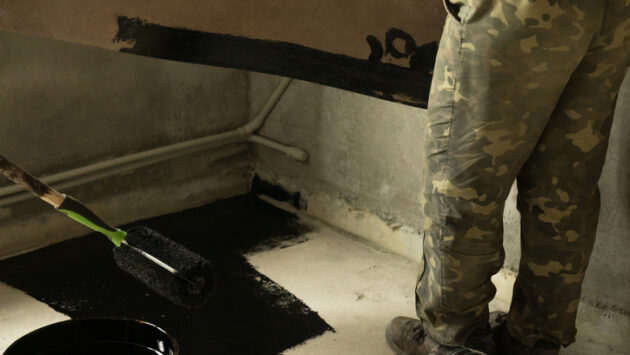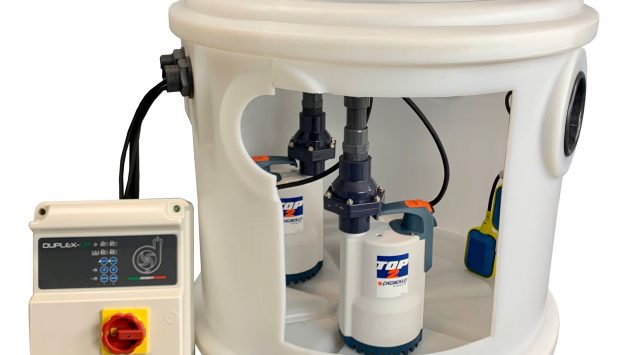What is a Basement or Cellar Sump Pump and How Does it Work?
When your basement or cellar floods, it can cause thousands of pounds worth of damage to both your home and your possessions.
If you live in an area with a high risk of flooding and want to protect your home from flooding and water damage, a basement sump pump can help.
Sump pump systems are an essential part of any basement waterproofing system and are most commonly used for basements or cellars that regularly flood or experience dampness problems. For the winter months when large amounts of rain or melting snow which cause rising water levels occur, a sump pump can be useful and provide you with peace of mind.
So, you might be wondering ‘what is a sump pump and how does it work?’. Let’s take a closer look.
What is a basement sump pump?
A sump pump is a cylindrical pump that is installed in the lowest part of your basement. It acts as part of a drainage system to prevent basements, especially those that sit below the water table, from flooding.
It’s easy for groundwater to rise in your basement or cellar during a storm or periods of heavy rain. Water can start to seep through the cracks in your foundations and penetrate through the walls.
However, if you have a sump pump installed, when the water level inside starts to rise, the pump will automatically turn on and drain the water away where it will no longer cause a problem for your home.
The excess water is automatically pumped out of your basement, along a discharge pipe which connects the pump to its drainage location and helps to prevent flooding-prone areas in the home from experiencing water damage.
Some pumps have an alarm that alerts you to let you know when the water level in the sump is too high and that your pump is going to start. This ensures you stay aware of the water levels and if your basement is at risk of flooding.
If your home is in an area prone to flooding, a sump pump is highly recommended.
How does a sump pump work in a basement?
A sump pump is designed to remove water from the lowest point in your home (such as your basement or cellar). There will be a hole around 2 feet deep and 18 inches wide in the concrete basement floor and the pump is placed in the sump pit or sump basin.
As the groundwater rises, the water flows into the sump pit and collects until the pump is activated by a float inside, similar to a toilet tank. Once the float rises to a set level, the float switch activates and the pump starts, triggering the pumping out of excess water.
The water is moved through a pipe and forced into a draining space which is located away from the foundations of your home. The water must be removed far enough away from your home to prevent flooding, water damage and mould.
Where does the water drain to?
The water from your sump pump should be drained into a designated area such as a dry well, a creek, a pond or a neighbourhood drain. You need to make sure that water is diverted away from your home and isn’t likely to come back in. The water should be pumped 10-20 feet away from your foundations.
A preventative solution
Although sump pumps are effective in removing flood water from cellars and basements, they also act as a preventative solution by pumping groundwater away. Some sump pumps can activate when they sense water in the soil to prevent the problem before it occurs.
Flood prevention
The variable climate in the UK means flooding has become more common. If your home floods, it can have a devastating impact, with significant damage resulting in huge costs, your possessions being ruined and even homelessness.
The installation of a sump pump can help to reduce the risk of flooding. It protects your basement and home and prevents you from having to spend thousands on repairing flood damage. They work especially well when there is heavy rainfall, strong storms or rapidly melting snow.
The sump pump system is always ready to detect and pump excess water away from your home so you won’t have to worry about flooding in your home.
Mould prevention
Alongside preventing flooding and water damage, sump pumps can also prevent mould from growing in your basement or cellar. Mould grows in moist conditions and can be detrimental to your health. Sump pumps help eliminate this moisture and prevent standing water. Without standing water or moisture, mould is unable to grow or cause any damage in the first place.
Fire prevention
Sump pumps can help to prevent electrical fires and fire damage too. If your basement starts to flood, water can get into electrical circuits or outlets which causes shorts in the circuits and can lead to electrical fires.
When should you think about installing a sump pump in your basement or cellar?
Not all homes require a sump pump but they are common in areas that are prone to flooding or large amounts of moisture. If your basement or cellar is usually warm and dry, you won’t need a sump pump.
However, if your house suffers from flooding or is damp and smells musty, moisture will likely find its way in.
Working alongside other waterproofing solutions, having a sump pump in your basement will provide added protection and provide a dry, habitable living or storage space.
You can browse our different types of sump pumps and find the right product for your basement in our online shop or, if you’d like more information or guidance on the right sump pump for your home, please contact our team.



